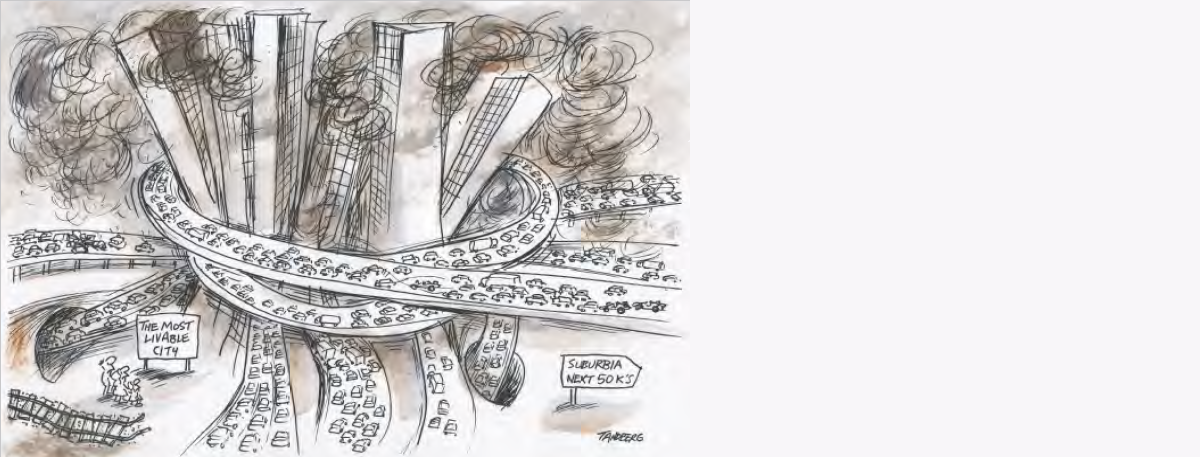Neat, Plausible and Wrong: Melbourne’s East West Link

The state of Victoria, Australia, has long been a site of tension between an incumbent and powerful road lobby and a community increasingly desirous of non-car transport alternatives. Today there is no greater signifier of this than the East West Link, a proposed 18km motorway in Melbourne estimated to cost $16 billion. The project is unprecedented both in the haste with which it is being pushed through the planning and pre-construction stages, and the apparent determination of the State Government not to seek any kind of public mandate for the project at a State election.
Yet the project has no conventional benefit-cost justification, does not serve a clearly defined demand in the context of Melbourne’s travel patterns and trends, and is likely to displace better-justified and more popular public transport projects for many years. Last year, it was the subject of Paul Mees’ final public addresses before his untimely death. This article examines the historical background to the East West Link, the arguments put forward for it, and the alternatives that have featured in the ensuing public debate.
Keywords: Motorways, Melbourne, Transport economics, Transport modelling, Agglomeration benefits, Cost-benefit analysis, Downs-Thompson paradox, predict and provide.
Originally published in Eco-Logica: World Transport Policy and Practice Volume 20.2/3 May 2014 and republished with permission by Dr Anthony Morton, President, Public Transport Users Association, Melbourne and Professor John Whitelegg, Stockholm Environment Institute at York, University Of York, UK.
Neat, Plausible and Wrong: Melbourne’s East West Link. by Anthony Morton
Introduction
Like much of the English-speaking world, the state of Victoria, Australia, has long been a site of tension between an incumbent and powerful road lobby and a community increasingly desirous of non-car transport alternatives (Mees, 2000 and Stone, 2008).
Today there is no greater signifier of this than the East West Link: a proposed 18km motorway in Melbourne, running from east to west through the inner northern and western suburbs (www.linkingmelbourne.vic.gov.au). Its eastern section would run for 5km through the inner north and pass within 3km of Melbourne’s Central Business District, and connect the existing Eastern Freeway at the eastern end with the CityLink tollway to the west. This eastern section alone has a current budget cost of $8 billion. The project’s western section would continue a further 13km through the inner west and connect ultimately with the Western Ring Road in Melbourne’s western industrial zone, raising the total project cost to an estimated $16 billion. Continue Reading…